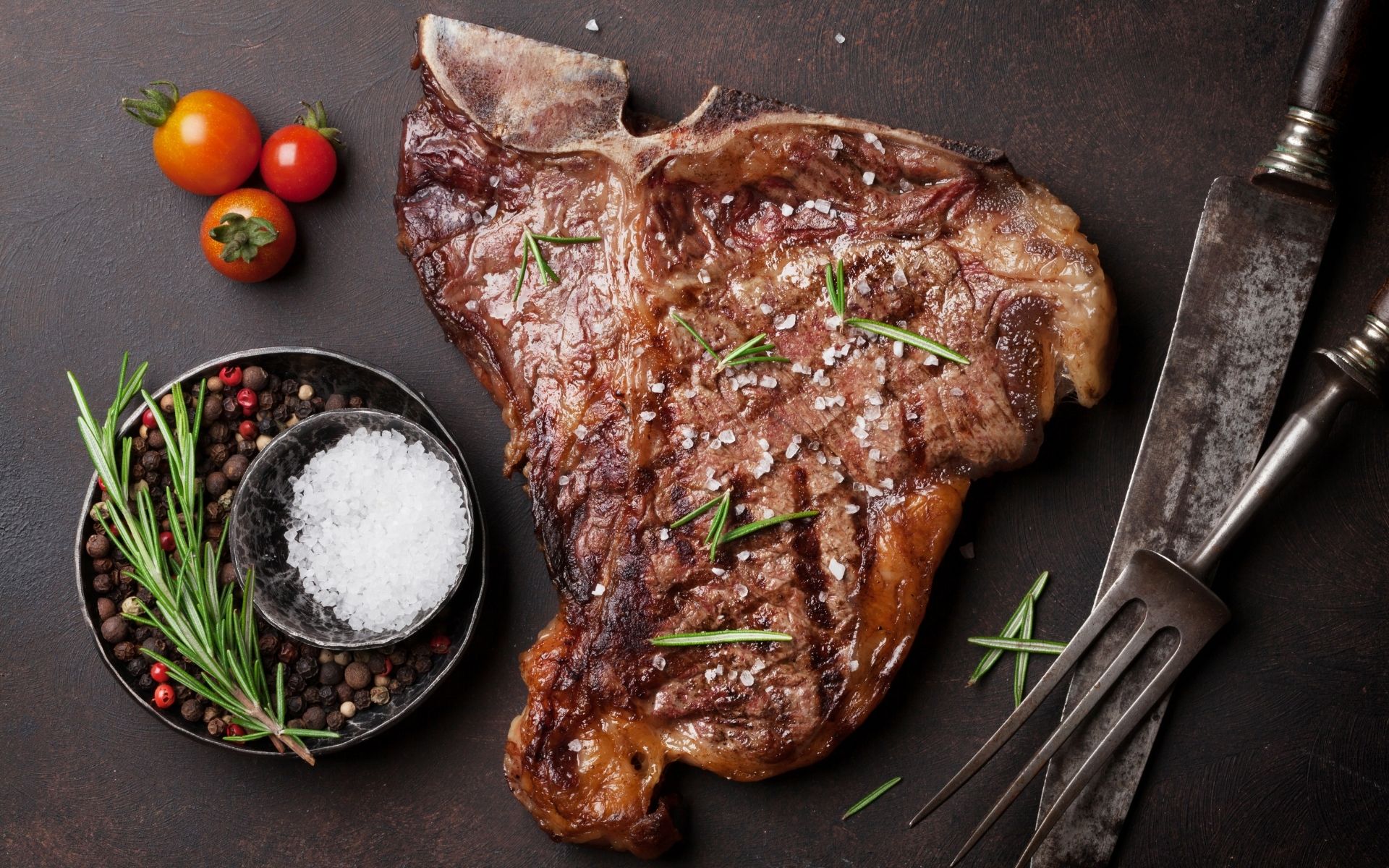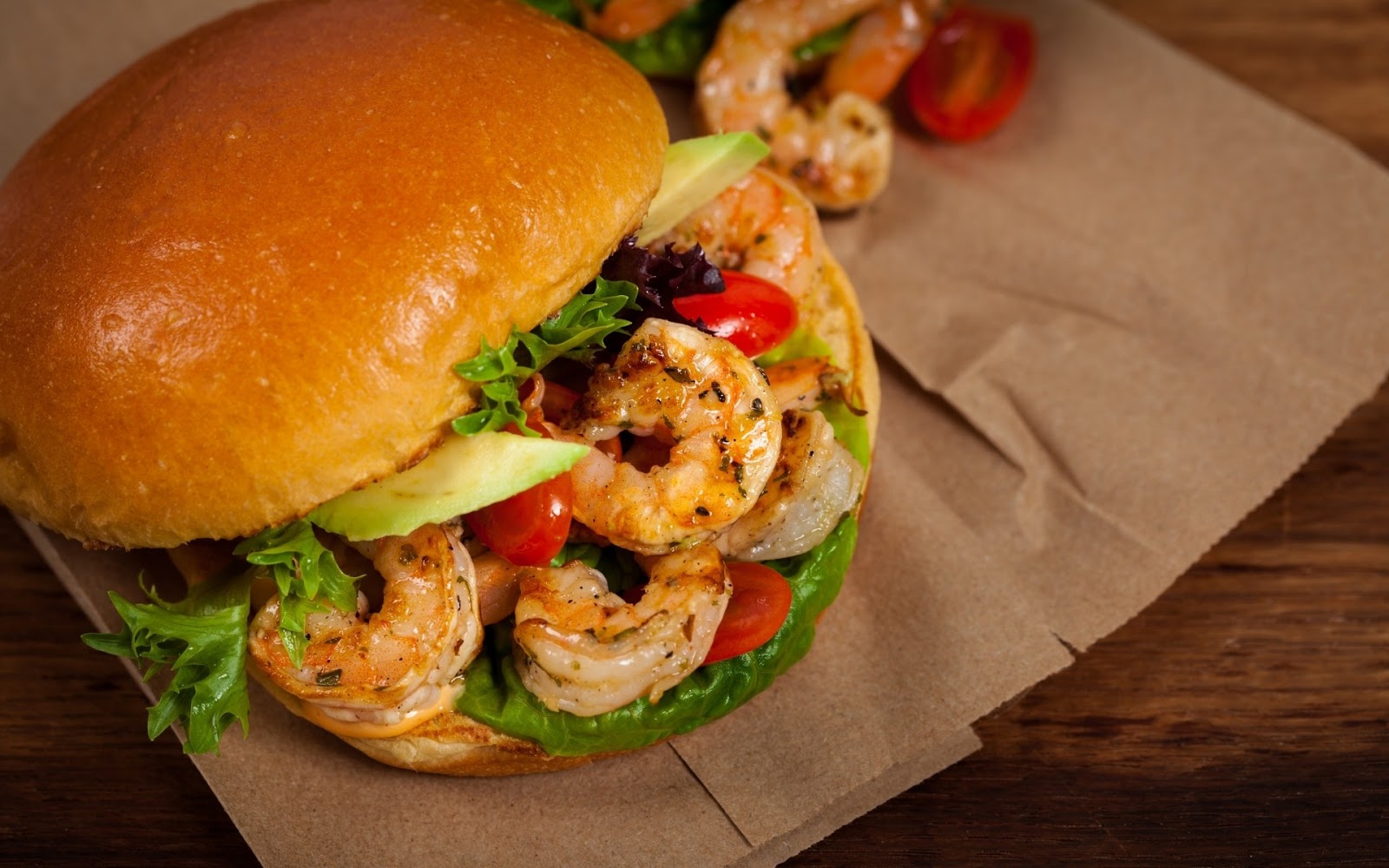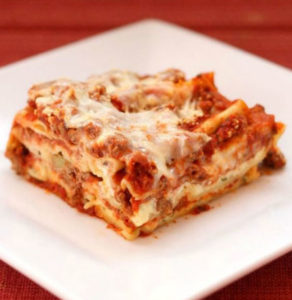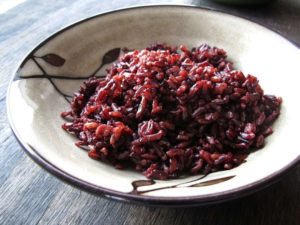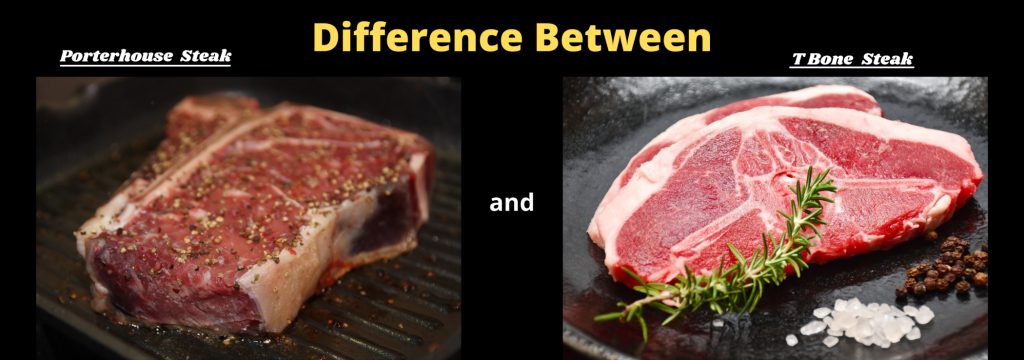
Many people might tell you there is no difference between a porterhouse steak and a T-bone steak. They say that it takes just a glance at the same T-shaped bone, with more meat on one side than the other, to know they’re a similar cut of beef.
Well, that’s wrong
Though T-bones and porterhouses are cut from an identical portion of the cattle (the short loin), and both hold the same types of meat (the NY strip and the tenderloin filet), the United States Department of Agriculture, or USDA, has strict rules about the amount of beef on a porterhouse or T-bone.
You may learn the difference below and get to know why porterhouses are exceptionally highly prized.
What Goes into a Porterhouse or T-Bone
Both kinds of meat, porterhouse and T-bone steaks, are cut from cattle’s short loin area. The T-shaped bone after which the T-bone steak is named runs through two sorts of steak in this portion of the cow.
These two cuts are exceptionally valued by those who love steak. One side of the bone is a NY strip similar in beef quality to that of rib-eye. Another side is a tenderloin filet: super lean and extra juicy.
Both the cuts are usually served on their own without the bone. You get a porterhouse or T-bone only if both the filet and strip are left on the bone.
Size Matters
So what separates a porterhouse from a T-bone? The essential distinction between porterhouse versus T bone comes down to the size of the filet.
T-bone steaks have less filet to them than Porterhouses. For the most part, the USDA considered the judge of everything meat-related – has specific rules for the size of the filet piece that must be available for a steak to qualify as a porterhouse.
Porterhouses Are T-Bones
The United States Department of Agriculture suggests that the filet should be a minimum of 1.25 inches thick for the T-bone steak to be entitled as a porterhouse.
Thickness is measured from the widest point on the filet to the bone.
Porterhouses are made from the rear of the short loin, where the tenderloin is thickest. The result is an incredibly beefy cut of steak. Most porterhouses weigh around 24 ounces and are served at steakhouses as food for two people.
But a T-Bone Isn’t a Porterhouse.
If a T-bone’s filet is shorter than 1.25 inches, it can only be marked as a T-bone steak. Note that a T-bone’s filet should be at least 0.25 inches thick to be sold as a T-bone. Or else, it may only be sold as a bone-in NY Strip or a Club steak.
Price Difference Between Porterhouse Vs. T Bone
For any of these cuts, those labeled with USDA Prime will have the highest price. However, this goes for pretty much any steak cut, whether a rib eye or a boneless strip, because these are viewed as almost an ideal steak with incredible marbling.
In any case, which type of beef is typically the most costly one?
Due to their hefty filets, porterhouse steaks have higher prices than T-bone steaks, in general.
In any case, a few steaks that qualify as porterhouses would have filets that are thick in one segment and meager in the rest, so give close consideration to the filet’s general size when you choose one.
Finally, the cost contrast between the two will boil down to an assortment of components, such as quality, the number of pounds they are, the duration they were aged, and even where you get them from.
A piece of porterhouse or T-bone from a butcher is most likely going to be more costly than a sample from a store, essentially due to the quality you’re getting.
Cooking Porterhouse vs. T Bone
Porterhouse or T-bone are both cooked similarly because they have the same texture and are made from the same part of the cow. The main difference when cooking them will be the time taken to cook them. The porterhouse usually will take some additional time on account of the size of its filet.
However, coming to the method of cooking, it’s the same for both. Cooking a steak like a porterhouse or T-bone is typically done best with a cast-iron skillet, which gives it a final sear and leaves within a perfect medium-rare pink.
Sprinkle some salt and pepper on the steak before cooking, and you’re all set.
Likewise, you may utilize your preferred steak rub to season the steaks and afterward set them on your charcoal or gas grill.
Singe them first on the hot side of the grill, and before you serve them, transfer them over to a low-heat side to get done with the cooking—more on that and how you can ace these cuts on the grill in a second.
What To Note When Choosing Between Porterhouse vs. T Bone Steaks
We would like you to locate the best segment of T-bone or porterhouse to accommodate your budget, so here are a couple of tips to assist you with doing that.
To begin with, know that some T-bones contain a more splendid filet piece than certified porterhouses. If you find a T-bone with steady filet thickness, you can get something nearer to a porterhouse cut (without following through on the porterhouse cost).
Essentially, you’ll have to utilize your porterhouse versus T bone analytical skills to sort out how you can best expand your budget depending on how much meat you’ll get from the steaks you pick.
Second, you can tell without a doubt what sort of meat steaks you’re getting by focusing on specific numbers on the label. For USDA-guaranteed meat, you can locate what’s known as an Institutional Meat Purchase Specifications (IMPS) number on the label.
This code notes what kind of meat it is under USDA principles, which may likewise be trailed by details of the meat, such as its quality, any additional ingredients, etc.
For porterhouse, search for code 1173; T-bone is 1174. (Note: This likewise works with different steaks, similar to hanger steak or rib-eye, so you can generally have a hold over your red meat decisions!)
At last, since T-bones and porterhouses are made of two sorts of meat, which cook at various rates and taste best at multiple temperatures, try out the given cooking tip. When grilling your steak, make a fire on just one side of the grill.
After searing the steak, cook it by keeping the strip portion over the flame, directing the filet to the non-flame side. This will leave the filet a bit rarer, bringing about a superior tasting steak.
Try out Chicago Steak Company’s excellent T-bone and Porterhouse steaks to taste some of America’s juiciest and highest quality meat. For additional grilling tricks on how to get the ideal porterhouse or T-bone, look at Steak U TV.


